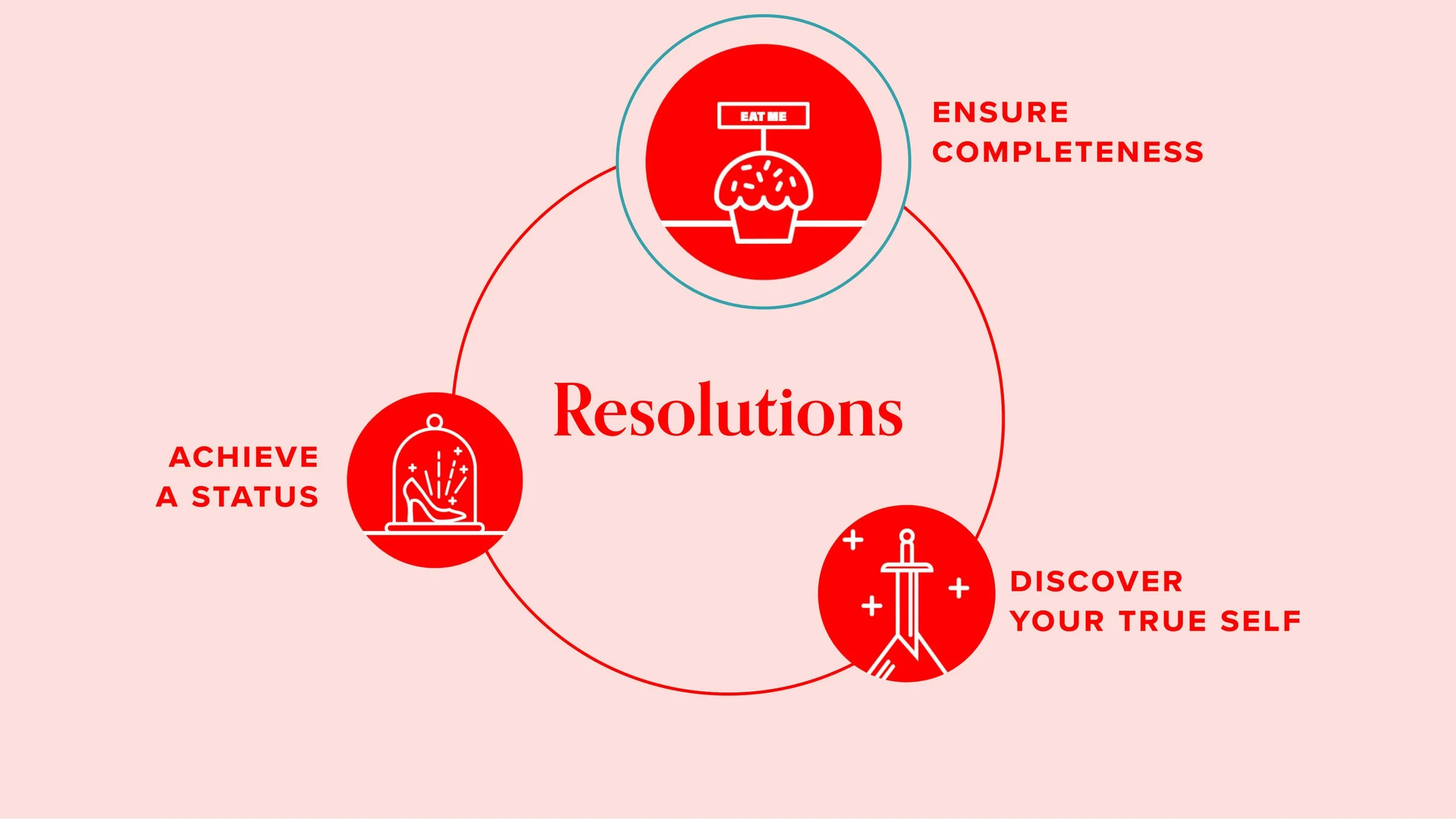#34. The deceptive stories we tell to... Ensure completeness (Part 2)
In the last issue of my newsletter, I discussed how we can design experiences to achieve a status. However, not all experiences are meant to elevate status or motivate action. Some are intended to fill a gap, not a social gap, but a personal one.
I've been reflecting on why AI, compared to other technologies, has experienced such rapid growth and widespread adoption. Most AI-driven products share one main promise: to make your life easier, more manageable, and to give you back your time.
AI Written, AI Read. A comic by Tom Fishburne.
AI-Powered experiences and a sense of feeling whole again.
AI-powered experiences aim to help users feel complete by addressing specific problems, minimising friction, or resolving unfinished aspects of their lives.
Ensure completeness. I often reference Alice in Wonderland to explain this resolution.
I often reference Alice in Wonderland to explain this idea.
Alice constantly struggles with her size, sometimes too big, sometimes too small, depending on what she eats. This issue creates a recurring frustration and sense of helplessness.
But eventually, she learns how to take control of it. She uses the very thing that once disoriented her (the mushroom, the cake) to solve the problem, and even to save herself when the Queen threatens to cut off her head.
In the same way, when we design experiences that aim to help users feel complete, we’re not focusing on the product’s features; we’re focusing on its benefits:
What does it resolve for the user?
What conflict does it help them manage?
How does it bring clarity or peace of mind?
Let's discuss AI and how most products built with this technology aim to make our lives easier.
AI tools ensure completeness by:
Closing a knowledge gap
Reducing effort or stress
Saving time or mental energy
Closing a knowledge gap
Example: Now that my nephew is 4 years old and full of questions, I often feel like I know less and less. The Seek app by iNaturalist uses AI to identify any plant, animal, or fungi from a photo, while your contribution helps scientists discover new species.
With this app, I can be better prepared for our next walk in the park!
Seek App. The app uses image recognition technology to identify the plants and animals around you.
Reducing effort or stress
Example: If you have considered started a podcast, AI can help you with that. Podpod is an AI-powered tool that turns articles and newsletters into podcasts. Just add podpod.me/ in front of any URL or forward a newsletter, and Podpod delivers a narrated version to your podcast app.
PodPod. Podpod turns in one click your articles into podcasts.
Saving time or mental energy
Example: Bookwatch is an app that lets you “read" books by watching simple explanations. If you read the testimonials, the app answers specific users’ issues: lack of time and problems with learning disabilities (like ADHD).
Bookwatch. What books do you want to read but don’t have time for?
Storytelling to make you feel less
Designing for completeness means creating an experience that helps the user feel rebalanced, reassured, and in control.
Experiences with AI can easily go very wrong as more people rely on it to think and make decisions.
This happens in three common ways:
Reduce our critical thinking
Replace human support and connection
Fake expertise
The Future of AI. A comic by Tom Fishburne.
Reduce our critical thinking
Example: I recently read through Jeremy Caplan's WonderTools newsletter, an article about research done by MIT that proves how extensive use of ChatGPT or AI tools weakens our critical thinking.
Replace human support and connection
Example: As human beings, we often underestimate how much we need psychological support and connection, which could lead us to rely on AI as our psychologist or couples therapist.
I was looking into the “Can We Talk?" app, which claims to help users find the right words and process their emotions before sharing it with their partner. While this could be a powerful tool, it can also be extremely dangerous if we allow AI to make decisions for us or fully guide us through specific choices.
Fake expertise
Example: Vibe coding is an innovative approach that allows you to create apps quickly using AI. Two examples that come to mind are Claude Artefacts and Base44.
While programming used to be a skill exclusive to programmers, AI is now making it accessible to everyone. However, this doesn’t mean that anyone becomes a programmer just by using these tools. According to this article, you still need to know how to guide the AI and understand the basics of programming to generate valid code.
Final thoughts
When designing experiences (with or without AI) that aim to ensure completeness, we should focus on expanding users’ knowledge and capabilities rather than diminishing them. This approach allows us to create experiences that truly fulfil them.
In fact, designing for completeness often addresses an internal conflict that the user may not even be able to articulate.
It’s essential to embed trust, empathy, and emotional clarity into the design from the outset.
Along their journey, users should feel understood, even before they engage deeply with the product or service. The experience should resonate with them as precisely what they need to feel whole again, rather than feeling less than what they are.
Want to learn how to help brands instil a sense of completeness the right way?
In my Story by Design workshop, we explore how to use narrative, psychology, and design research to help brands rise, without resorting to manipulation.
You’ll learn how to craft experiences that give users a genuine sense of belonging and value, while strengthening a brand’s identity and purpose.
If this article resonated with you, join the live workshop on January 12th and start shaping stories that elevate, not deceive.




